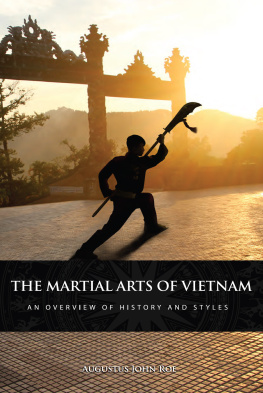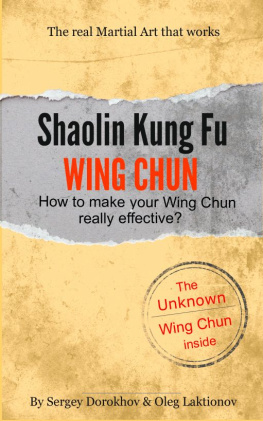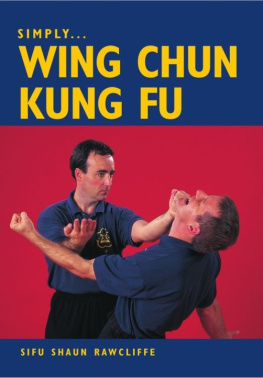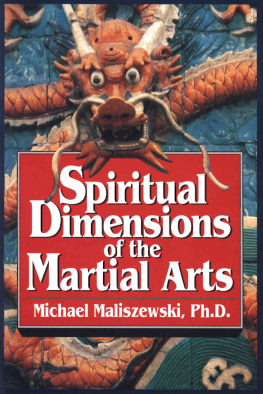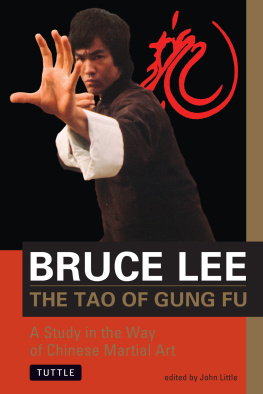The Creation of Wing Chun
The Creation of Wing Chun
A Social History of the
Southern Chinese Martial Arts
Benjamin N. Judkins and Jon Nielson
The cover art shows a set of 19th century hudiedao similar to those used in Southern China during the Opium Wars and the Red Turban Revolt.
Photo by Benjamin Judkins.
Published by State University of New York Press, Albany
2015 State University of New York
All rights reserved
Printed in the United States of America
No part of this book may be used or reproduced in any manner whatsoever without written permission. No part of this book may be stored in a retrieval system or transmitted in any form or by any means including electronic, electrostatic, magnetic tape, mechanical, photocopying, recording, or otherwise without the prior permission in writing of the publisher.
For information, contact State University of New York Press, Albany, NY
www.sunypress.edu
Production, Diane Ganeles
Marketing, Michael Campochiaro
Library of Congress Cataloging-in-Publication Data
Judkins, Benjamin N., and Jon Nielson.
The creation of Wing Chun : a social history of the Southern Chinese martial arts / Benjamin N. Judkins and Jon Nielson.
pages cm
Includes bibliographical references and index.
ISBN 978-1-4384-5693-5 (hardcover : alk. paper)
ISBN 978-1-4384-5695-9 (e-book : alk. paper)
1. Kung fuChina. 2. Martial artsChina. I. Nielson, Jon. II. Title.
GV1114.7.J83 2015
796.815'9dc23 2014030980
10 9 8 7 6 5 4 3 2 1
For all he has taught the world about Wing Chun,
for his enthusiasm and never-ending curiosity,
this book is dedicated to the memory of Ron Heimberger.
Contents
P ART I: H AND C OMBAT , I DENTITY, AND
C IVIL S OCIETY IN G UANGDONG , 18001949
P ART II: C ONFLICT , I MPERIALISM AND M ODERNIZATION :
T HE E VOLUTION OF W ING C HUN K UNG F U , 19001972
Maps and Figures
Maps
Figure
Map 1. Southern China
Map 2. Historic and Modern Guangdong Province
Map 3. The Pearl River Delta
Map 4. Ip Mans Hong Kong, 19501972
Important Locations, including Schools and Classes, in Ip Mans Hong Kong, 19501972
159 Tai Nan Street (Restaurant Workers Union), 1950.
Sham Shui Po district of Kowloon. Location of Master Chan Daus Do Pai school.
Bridges Street. Roof top classes conducted here in 1951.
Wah Ying Restaurant, Stanley Street. Classes held here in 1951.
Hoi Tan Street School, 1953.
Sam Tai Tze Temple, advanced evening classes, 1953.
Shek Kip Mei neighborhood.
Lee Tat Street in Yau Ma Tei. Classes moved here in 1956.
Mun Tin Fang Restaurant in Mongkuk, Kowloon. Feast with White Crane clan, 1956.
Li Cheng UK Estate, 1957.
School moved to Shek Kip Mei, 1958.
Hing Ip Building on Castle Peak Road, 1961.
Tai Sang Restaurant on Fook Chuen Street in Tai Kok Tsui, 19611963.
Yee Was tailor shop in Tsim Sha Tsui. Private classes held here in the early 1960s.
Hong Kong police officers and detectives, San Po district. Early to mid-1960s.
Yee Fai Building on Tung Choi Street. Apartment bought by Ip Man in 1964.
Queen Elizabeth Hospital. Classes taught here in the late 1960s and early 1970s.
3 Nullah Road, Headquarters of the Hong Kong Ving Tsun Athletic Association.
Acknowledgments
We would like to extend our thanks to a number of individuals who have assisted us in this project. Our gratitude goes to Grand Master Ip Ching for discussing his fathers life and answering many of the questions that arose while researching this volume. Thomas Zumbado and Gabriel Judkins contributed their cartographic skills to help us better visualize the story of the southern Chinese martial arts. Our thanks also go to Shaohua Lei and Shuying Poon, who provided invaluable assistance with the translation of many sources that we used in our research; Dr. Matthew B. Christensen, the Academic Director at BYU, for his help and advice; and William Leung, who spent hours assembling this volumes glossary.
We appreciate the efforts of all those who read this manuscript in full or part. Our writing benefited from the highly informed recommendations that we received from the two anonymous reviewers provided by SUNY Press. Anne Routon offered critical advice that helped us to better navigate the publication process. Special thanks go to the editorial and production staff at SUNY Press for their support in bringing this project to fruition. We would also like to thank Ip Man for continuing to make Wing Chun relevant in an ever-changing environment and Bruce Lee for introducing it to a global audience.
Benjamin Judkins would like to express his gratitude to his many teachers: to Helen Milner and David Baldwin who helped him think about institutions, to Richard Bushman for introducing him to the discipline of history, and to Russell Judkins who showed him the many dimensions of culture. Lastly, he would like to thank his wife Tara whose belief and unwavering support made this book possible.
Jon Nielson would like to thank his children; Jerry Gardner for introducing him to Wing Chun; Malcolm Lee for accepting the challenge to teach a pushy, arrogant teenager; Eddie Chong for his inspiration to keep questioning, no matter what anyone says; Ron Heimberger for unlocking the mysteries of Wing Chun; Ip Ching for tying all of it together into one unified whole; Andrea Nielson for her patience with and support of this obsession; and Benjamin Judkins for helping to make this dream a reality.
Introduction
A man should always think of the source of the water as he drinks it; it is this shared feeling that keeps our kung fu brothers together.
Ip Man, History of Wing Chun, Undated
In April of 2011 Hong Kong Airlines did something out of character for a commercial carrier. Most airlines seeking a share of the lucrative business-class market attempt to impress the public with photos of their genteel and sumptuous cabins. Some seem to be engaged in an arms race to find ever more attractive and demure flight attendants. Instead, Hong Kong Airlines announced that their flight crews would be taking mandatory training in a southern Chinese form of hand combat called Wing Chun. Having earned a reputation as a brutal street fighting art on the rooftops of Hong Kong in the 1950s, this move appears paradoxical.
It would be wrong to suggest that there is no glamour attached to Wing Chun. This was the only martial art that the iconic Bruce Lee ever studied. Nevertheless, when one juxtaposes the image of a bloody Lee (straight from the promotional material for Enter the Dragon ) with a petite flight attendant from any competitors television commercial, one must ask what the advertising executives of Hong Kong Airlines know about their regional markets that we do not.


